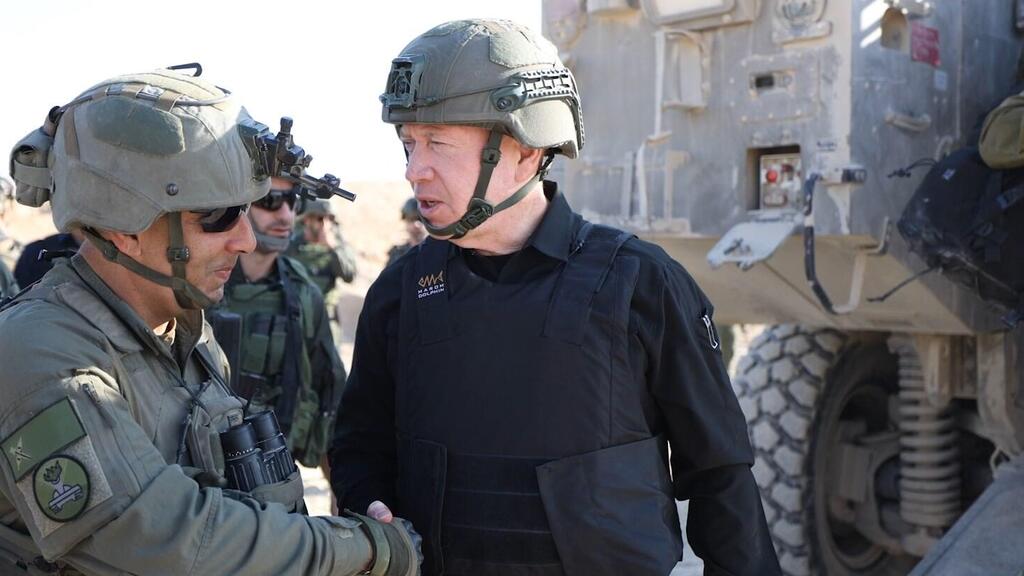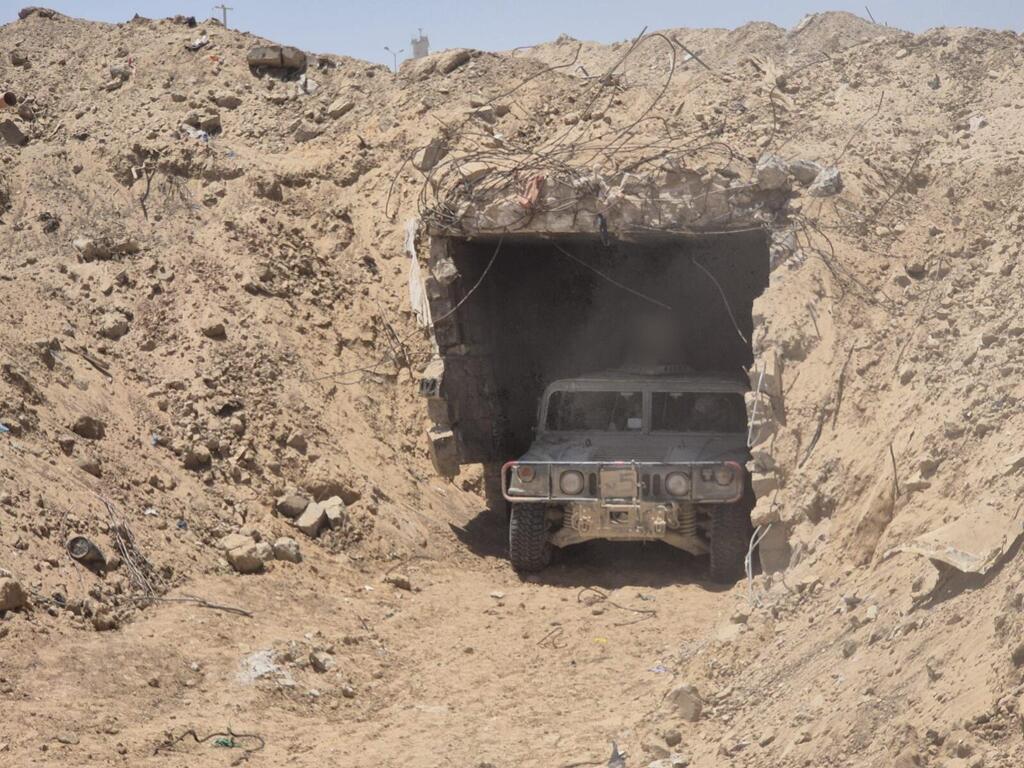Getting your Trinity Audio player ready...
Defense Minister Yoav Gallant visited the Philadelphi Corridor on Wednesday, where he announced that the 162nd Division defeated the Hamas' Rafah Brigade and destroyed 150 tunnels in the area. “The most important thing is to remember what the goals of the war are, to meet all the goals of the war, both regarding Hamas and also regarding the hostages. We look to the north now and understand why. This is the situation now," Gallant said.
The defense minister visited the 162nd Division in Rafah, and held a security assessment with the division commander Brigadier General Itzik Cohen and the Nahal Division Commander Col. Yair Zuckerman.
"I looked at the tunnels. First of all, we have destroyed 150 tunnels on the Philadelphi Corridor, stretching across the Gaza-Egypt border. Of the 150 that we have destroyed, about 100 were tunnels we uncovered with engineering tools and were covered with a meter of dirt. It is easy to find them with aerial imaging, and it is also easy to destroy them. I instructed the forces to destroy all tunnels as soon as possible," he said.
The Philadelphi Route is considered one of the main points of contention in the cease-fire or hostage deal with Hamas. Israel insists on keeping a military presence on the axis, but Hamas and Egypt firmly refuse. Egypt refused to even convey the Israeli position to Hamas about the axis. Israel is ready to reduce its number of troops there but the Egyptians demand a full withdrawal.
IDF Spokesperson Rear Admiral Daniel Hagari was asked on Tuesday what the IDF's position was regarding a military presence in the Philadelphi Corridor, and said that "the role of the IDF is to produce security alternatives for the political echelon, to be creative and determined in this matter. We also need to allow the government the scope for a decision. We will know how to implement any decision that the political echelon makes."
About three months ago, the IDF announced that it had gained operational control of the Philadelphi Corridor and that it had located 200 tunnel shafts and 35 tunnels, some of which even cross into Egypt. However, about two weeks later, a senior military official clarified in a conversation with The Washington Post that, according to estimates, more tunnels in the area have not been located.
The IDF also located a three-meter deep tunnel under the Philadelphi Route, which allows the passage of vehicles. This was not the first time that the IDF located such a tunnel. As early as last December, Hagari announced that a large tunnel complex had been uncovered, which begins under the Jabaliya refugee camp and continues for about four kilometers until near the border with Israel in the north of the Gaza Strip.





